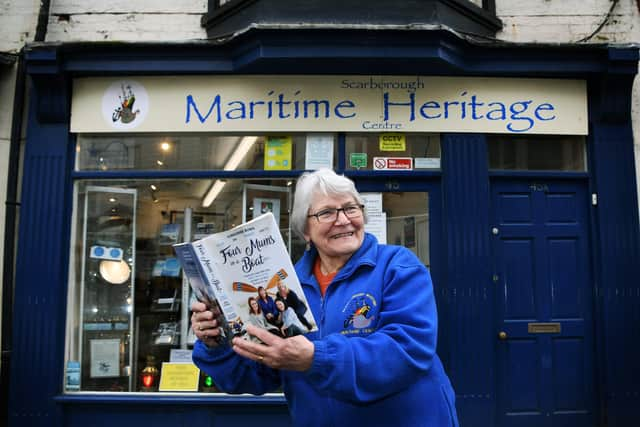Saluting Yorkshire's pioneering women who sailed at sea with new Scarborough exhibition


Yet despite the myths and superstitions, most sailing ships still had a scantily clad woman carved on the bow - so helping to calm the seas to submission.
Now, a new exhibition at the Scarborough Maritime Heritage Centre (SMHC) this spring to summer explores true stories through history.
And what it shows is that women have been at sea for many centuries, and are still breaking new ground as pioneers today.


There is Dora Walker, as Scarborough's first female skipper, then Dame Ellen MacArthur and the Yorkshire Rows who have all helped break new records in recent years.
Mark Vesey, chairman of SMHC, said: "When you delve into history, women have been at sea for thousands of years. Sometimes dressed as men, or as stowaways, but certainly present.
"We've had women pirates, female Vikings. Women have always been there. It seems only in our most recent history that this superstition arose."
The earliest records show an Artemisia I of Caria, Queen of Halicarnassus, as a successful naval commander in 500 BC. Then Princess Sela as the first Norwegian pirate in 400 AD.


By the 1700s, in the great age of sail, Betsy and Hannah Miller are listed as Captains of the brig Clytus on Scotland's coast. Hannah Snell, known as James Gray, was the first woman in the Royal Navy. Then working botanist Jeanne Baret, who travelled the world by ship.
Closer to home Dora Walker is known as Yorkshire's first female skipper, born 1890 and going on to sail the seas with a pistol on her hip and an Army issue tin hat.
Since that time Dame Ellen MacArthur, who once worked at a sailing school in Hull, became the fastest solo sailor to sail around the world in 2005. Then the Yorkshire Rows, four mums from the region who became the oldest female crew to cross the Atlantic in 2016.
The Scarborough RNLI took on its first female member Tabz Nixon in 2018. The group now has four women crew, and there are 62 females, cadets and staff, in the local Sea Cadets. The exhibition focuses on one of them, Charlie Winter, who has just turned 15.


There are photographs, clippings, ganseys and crab pots, exploring the history of Women at Sea. The SMHC is run entirely by volunteers and public donations, and the exhibition is open from 11am to 4pm, Wednesdays to Sundays until June.
"There are now 1.2m seafarers working across the world with women making up just two per cent of the workforce," said Mr Vesey. "It is still a very male dominated industry.
"There are some pioneering women, doing an incredible job. It is absolutely fascinating. All the women that have appeared through history were real pioneers. Women on submarines, the first female Admiral. Women are still making history, and are still breaking barriers."